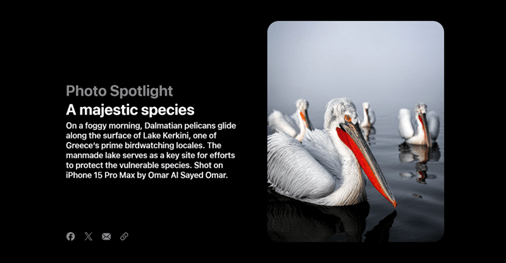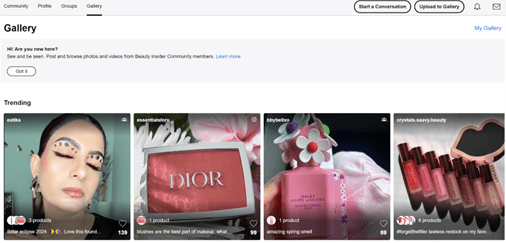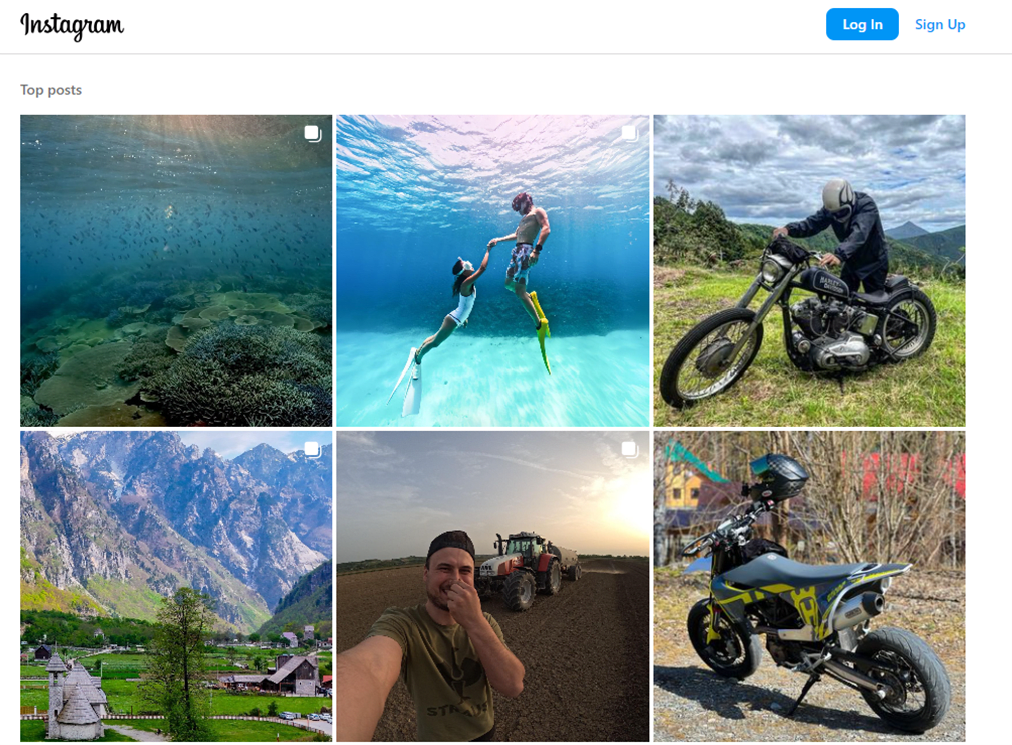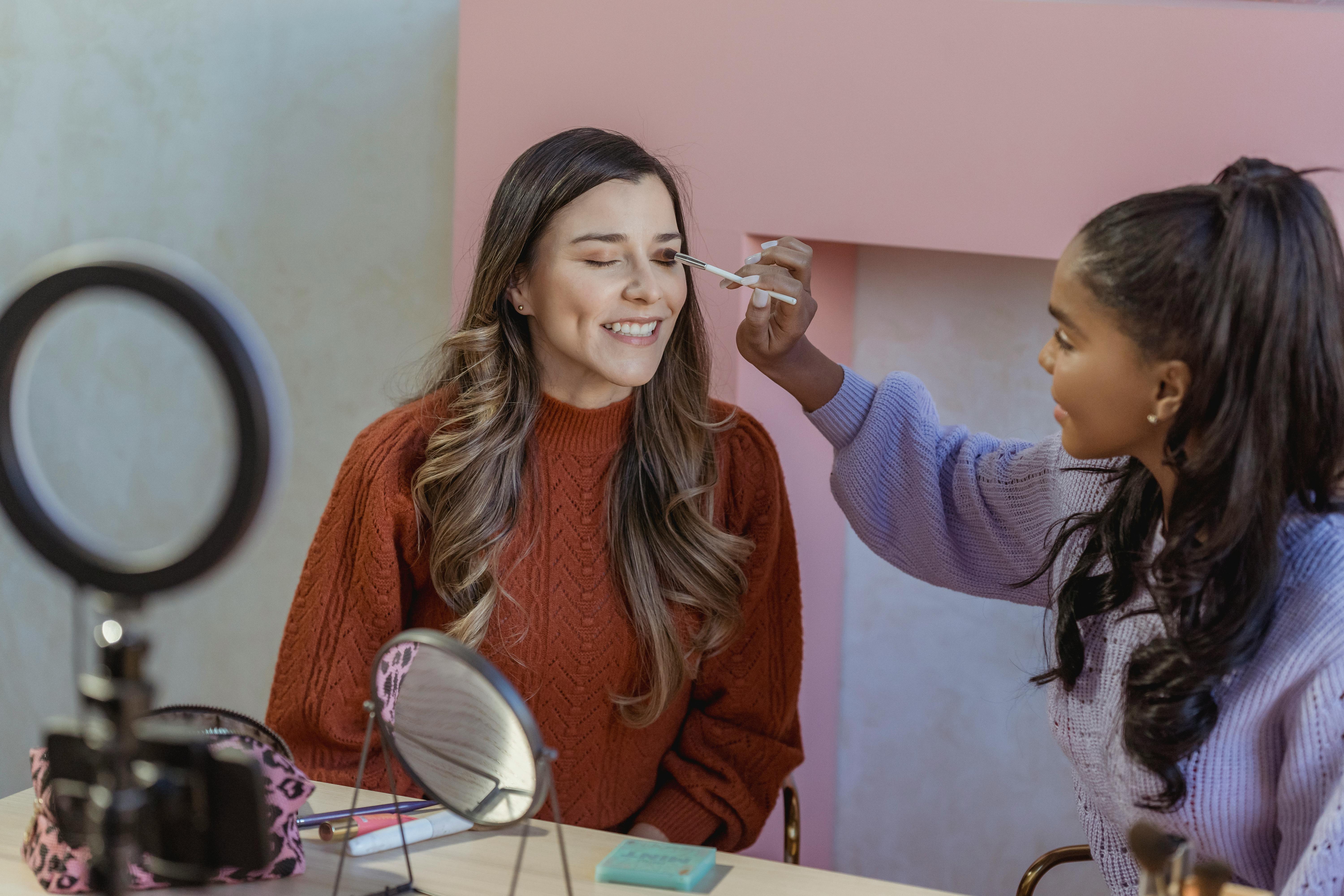What is user-generated content? Examples and best practices
Written by Emma Sharp on 11 minute read
Discover what user-generated content is and how this free online marketing method can help you reach new customers and grow your business organically.

User-generated content (UGC) marketing is content created by consumers that promotes a business’ product or service. UGC is a powerful tool for businesses and advertisers when marketing their brand and can come in almost any form - from simple product reviews to blog posts or images and videos - making it ideal for social media affiliate marketing.
Not only is user-generated content an organic way to market, but it also helps create trust between potential customers and your brand by highlighting genuine positive experiences from your existing customer base.
How does user-generated content work?
With customers surrounded by marketing and advertising at every turn in their daily lives, it can often become difficult to break through and grab their attention. User-generated content allows customers to talk to each other to learn about the products and services, building trust and engagement along the way.
User-generated content is not necessarily a paid promotion. Much of what makes UGC so effective is that it’s customer-centric and authentic – so it often does not involve any payment. However, you might still offer incentives to those who post content. Perhaps you’ll hold a contest, encouraging users to tag you or use a specific hashtag in the post and offer a discount or free item to the best photo or video.
Different types of UGC include:
- Written reviews - Written reviews and testimonials build trust among customers and could contribute to increased customer loyalty. Adding images to support reviews demonstrates authenticity and can help with purchasing decisions e.g. customers modelling their clothing purchases allow others to see the fit and determine which size to purchase.
- Videos - From unboxings to reviews and tutorials, creating video content for YouTube is one of the most effective ways to leverage UGC.
- Social media - In addition to hosting the above approaches, social media’s use of hashtags can make it easier to locate and gather posts about your brand’s products.
[Include a screenshot of mixed media UGC product reviews]
Many influencers earn income as affiliate marketers, and running an affiliate programme is a great way for you to encourage user-generated content from them, expanding your reach with their large platform and audience.
Affiliate marketers can sign up for your programme and receive a unique affiliate link to your product. Affiliates can then include that link in their user-generated content, and whenever someone clicks through and makes a purchase, they receive a commission.
Awin has a number of tools to help advertisers connect with affiliate publishers. Our voucher attribution tool allows you to provide an exclusive voucher code to a publisher and track all transactions made using that code – with or without an affiliate link. This is designed to facilitate partnerships between businesses and a variety of affiliate types, including social media influencers, making it a great way to encourage effective user-generated content.
The differences between brand-generated content and UGC
As the name suggests, brand-generated content is created directly by the brand. While this allows for close control over considerations like messaging and tone of voice, this approach does not have the authenticity of UGC, which is created directly by customers, allowing for genuine honesty and authenticity that appeal to potential customers.
Why people trust UGC
At present, user-generated content can be just as (if not more) important than customer reviews. Think about restaurants, bars, and clubs. Whilst of course, good reviews matter, many will go to restaurants simply because they’ve seen people post about it on Instagram or will buy a product because they’ve seen it discussed in a forum. It’s a good way to build hype around your product with the endorsement of existing customers.
Consumers are more likely to trust the word of other consumers – especially those they already follow on social media – than they are to trust the carefully crafted words of the brand itself, or often faceless written reviews. User-generated content has a more organic, authentic feel, while still highlighting the features and benefits of your product. Users want to hear from real people about their genuine experiences.
Consider an apparel brand, for example. A full photoshoot with a fashion model and professional lighting will certainly appeal to many, but there’s a large group of shoppers who would much rather see how the clothes look in normal lighting, modelled by those who actually bought the piece, offering a more realistic look at what’s on offer.
Of course, it depends on your brand. If you’re a luxury brand selling high-end products, perhaps the traditional marketing approach will appeal more to your core demographic, but it’s becoming increasingly popular to use more authentic, realistic marketing – and that’s why user-generated content performs so well.
Why content moderation is important in user-generated campaigns
While UGC is based on gathering honest and trustworthy customer feedback, the internet is a messy place, making content moderation an important part of any UGC campaign.
Moderation of content ensures that the reviews are genuine and that nothing inappropriate gets promoted by your brand. Just because your hashtag is used doesn’t mean the content should automatically be shared with your audience. Creating a moderation stage will ensure that any content shared on your platforms aligns with the core values of your company and its customer base. It also provides another opportunity to check that collaborations with influencers have been correctly disclosed.
Moderation should not be used as a filter for negative feedback, rather it should be seen as an opportunity to engage directly to understand your audience and find ways to resolve issues.
Great examples of user-generated content
Apple’s #ShotoniPhone
In an ongoing campaign that has been running since 2015, Apple has used the hashtag #ShotoniPhone to demonstrate the performance of their device’s cameras in the hands of real people. This has been a recurring feature of new phone launches over the last decade.
This example is from the Apple Stories page, where creators and developers share case studies of how Apple products have enhanced their work.

Sephora’s Community Gallery
Cosmetics brand Sephora has created a community gallery that uses a combination of social media posts and directly uploaded content to allow their users to share photographs and reviews of the products.
Each review shows the username and contributor level of each entry to show they are legitimate and includes links to the relevant product pages.

#Gopro
GoPro cameras are a popular tool for enthusiasts in cycling and other outdoor activities to record their adventures. The product’s benefit is how it puts viewers into the action without getting in the way, and demonstrating this has become the core of their social media strategy across TikTok and Instagram channels. Millions of people submit aspirational footage that implicitly demonstrates the product’s benefit, gathering 48.6m likes and 3m followers on TikTok alone.

The pros and cons of using UGC instead of professional content
Pros:
- Increased engagement
- Building audience relationships and trust
- Demonstrating authenticity
- Reducing marketing costs
Cons:
- Negative content
- Moderation costs
- Legal issues (e.g. content permission)
Why user-generated content is a key part of social media marketing strategy
Not only is UGC more trusted than traditional advertising, it is likely happening at some level already, making it a potentially untapped opportunity for social media marketing.
Anyone discussing or reviewing your products and services on social media is creating UGC - the key is to ensure this is used effectively. Through social listening tools, mentions and related hashtags can be tracked. Contents and campaigns can be used to encourage the creation of additional UGC. All of this content can then be collected and used onsite and across social media channels to promote products. Brands can also engage with creators by liking and commenting, which will also expand the reach of the posts.
Industries where UGC works best
User-generated content can be beneficial for just about any business, but there are certainly some sectors and products where it’s more prevalent:

- Hotel or bed and breakfast - Encourage guests to share photos and videos online with a specific hashtag – and you’ll soon have an entire library of visuals promoting your brand without having to pay for professional photography.

- Restaurants and other hospitality businesses - Instagram is full of people posting photos of a dish or a cocktail and tagging the venue – this is a very valuable way to attract new customers and demonstrate the atmosphere of the venue.

- Beauty, fashion and cosmetics brands - As such a visual sector, user-generated content being used frequently to demonstrate new products. Through video and social media reviews, customers are now becoming the company’s most trusted models as they create make-up tutorials and outfits using the brand’s products.
From gyms to event venues and lifestyle brands, so long as you have a product or service you think people will want to talk about, UGC can work for you.
Tailoring your products for, and through, UGC
When promoting your products through UGC on social media, you want to make sure to use a unique, ideally branded, hashtag so that when people browse it, they only see content that relates directly to your product.
Hashtags make it easier to find content directly related to your products, but not everything will be suitable for use. Even branded hashtags can become overcrowded with irrelevant, off-brand content, so monitor the content carefully before sharing.
You also don’t want people to say anything negative about your brand whilst inadvertently using your name and product - though this presents an opportunity to engage with the audience, understand their complaints, and build relationships.
How UGC can help you understand uses and improve your product
You’ll certainly have an idea in mind of how your UGC will look – but once it’s in the hands of the people, that hashtag might yield unexpected results. That’s not necessarily a bad thing. You might find through UGC that customers are using your product in a way you hadn’t considered, or that they call out a feature you hadn’t prioritised in your marketing strategy.
UGC is a great way to understand how customers engage with your brand and identify strengths, weaknesses, and trends that you can use to guide your approach going forward.
Optimising products, packaging and even stores for UGC
Presentation and packaging are more important than ever. If you’re selling a perfume; there’s no way to prove your fragrance smells good through a picture or video – but you can create an ‘experience’ around simply opening the box that loyal fans will want to post about. Including little freebies will add a little extra interest that users can call out.
If you have a physical space – like a store or restaurant – try to make the space ‘Instagrammable’. Do some research to see what kind of settings gain traction on social – be it floral arrangements, neon lights, or otherwise. Many shops and venues will have feature spaces designed to be a photo spot; it might even simply be the changing room mirrors. Include a hashtag on things like signage and menus to encourage users to post. Perhaps that neon light can display a catchy, branded hashtag that sits in the backdrop of users’ photos.
There are certainly some risks when encouraging user-generated content, but so long as you’re confident that customers will love your product, it will be hugely beneficial for brand awareness.



